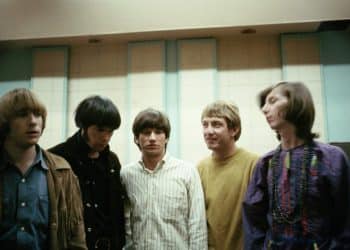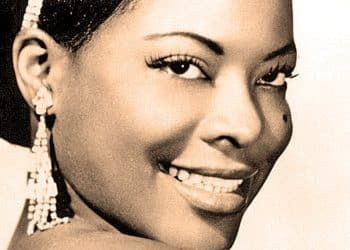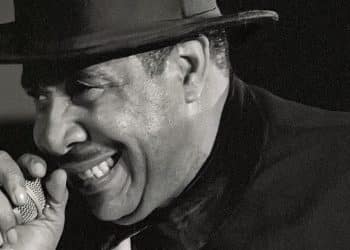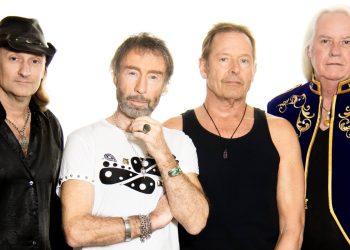Madonna, the undisputed Queen of Pop, has reigned over the music world for decades, leaving an indelible mark on the industry with her unparalleled talent, boundary-pushing artistry, and fearless reinvention. From her early days as a dance-pop sensation in the 1980s to her evolution into a cultural icon and musical pioneer, Madonna’s career has been nothing short of legendary. With a string of chart-topping hits that have defined generations, her music has transcended time, genres, and trends, solidifying her as one of the most influential artists in history.
In this article, we’re diving into the glittering depths of Madonna’s discography to bring you the top 10 most popular Madonna songs of all time. These tracks are more than just pop anthems—they’re moments in history, each one reflecting her unique ability to reinvent herself and connect with audiences on a deeply personal level. Whether you’re a lifelong fan or just beginning to explore her music, this list will take you on a journey through the unforgettable beats, powerful lyrics, and iconic moments that have made Madonna a global phenomenon. So, dust off your dancing shoes and prepare to be inspired by the magic of Madonna, one timeless hit at a time!
1. Like a Virgin (1984)
“Like a Virgin” is more than just a song; it’s a cultural landmark that catapulted Madonna into global superstardom in 1984. With its bouncy bassline, catchy melody, and playful lyrics, the track became an anthem of self-confidence and reinvention. Written by Tom Kelly and Billy Steinberg, the song explores themes of renewal and the thrill of fresh beginnings, all delivered with Madonna’s signature mix of sass and vulnerability.
Its impact was amplified by Madonna’s provocative performance at the first-ever MTV Video Music Awards, where she emerged from a giant wedding cake in a bridal gown, complete with a “Boy Toy” belt. This unforgettable moment cemented her reputation as a fearless provocateur willing to challenge societal norms. The accompanying music video, shot in Venice, Italy, with its striking imagery of canals and lions, further added to the song’s mystique.
“Like a Virgin” topped charts worldwide, becoming Madonna’s first No. 1 hit on the Billboard Hot 100 and setting the stage for her ascent as a pop icon. Its legacy endures, not only as a quintessential ‘80s hit but also as a symbol of empowerment and self-expression, inspiring countless artists and fans alike.
2. Vogue (1990)
“Vogue” is more than a song; it’s a movement that captured the essence of the early 1990s dance culture and brought it into the mainstream. Released in 1990 as part of the I’m Breathless album, the track was inspired by the Harlem ballroom scene, where “voguing” – an expressive dance style characterized by striking poses – was born.
With its pulsating house beat and Madonna’s sultry spoken-word interlude paying homage to Hollywood icons like Greta Garbo and Marilyn Monroe, “Vogue” became an instant global sensation. The song’s infectious rhythm and celebration of individuality and confidence struck a chord with listeners, turning it into a No. 1 hit in over 30 countries.
The accompanying black-and-white music video, directed by David Fincher, elevated the song to iconic status. With its high-fashion aesthetic and groundbreaking choreography, it redefined the visual standards of pop music. “Vogue” was not only a commercial triumph but also a cultural phenomenon, bridging the gap between underground LGBTQ+ culture and mainstream pop.
Even decades later, “Vogue” remains a timeless anthem of empowerment, encouraging people to embrace their uniqueness and “strike a pose.” It’s a testament to Madonna’s ability to set trends and redefine the boundaries of pop music.
3. Like a Prayer (1989)
“Like a Prayer” marked a bold artistic evolution for Madonna, showcasing her willingness to blend deeply personal themes with innovative pop production. Released in 1989, the song combines elements of gospel, rock, and funk, creating a rich and emotionally charged listening experience.
Lyrically, the track delves into themes of love, faith, and redemption, exploring the intertwining of spirituality and human desire. Madonna’s impassioned vocals, supported by a full gospel choir, convey both vulnerability and strength, making the song a deeply resonant masterpiece. The production, helmed by Madonna and Patrick Leonard, balances raw emotion with polished sophistication.
The music video sparked global controversy for its provocative use of religious imagery, including stigmata, crosses, and depictions of racial injustice. While the backlash was intense, it only underscored Madonna’s commitment to pushing boundaries and addressing societal issues through her art.
“Like a Prayer” became a commercial triumph, topping charts worldwide and earning critical acclaim. It solidified Madonna’s status as a serious artist capable of addressing complex themes while delivering unforgettable pop hooks. To this day, “Like a Prayer” remains one of her most celebrated works, a timeless anthem of passion, faith, and empowerment.
4. Material Girl (1984)
“Material Girl” isn’t just a song; it’s a cultural statement that helped define the 1980s. Released in 1984 as the second single from Madonna’s Like a Virgin album, the track instantly became a pop anthem. With its cheeky lyrics about valuing material wealth and independence over romance, the song perfectly captured the decade’s obsession with consumerism and glamour.
Madonna’s performance in the music video, inspired by Marilyn Monroe’s iconic “Diamonds Are a Girl’s Best Friend” sequence from Gentlemen Prefer Blondes, solidified her image as a glamorous and empowered pop star. Dressed in a pink gown, surrounded by suitors bearing extravagant gifts, she brought a satirical edge to the idea of wealth and romance.
The song’s infectious melody, catchy hook, and playful production made it a massive hit, reaching the top 5 on the Billboard Hot 100 and becoming one of Madonna’s most recognizable tracks. However, despite its success, Madonna has expressed a love-hate relationship with the nickname “Material Girl,” which followed her throughout her career.
“Material Girl” remains a quintessential 1980s classic. It’s both a fun, upbeat track and a clever commentary on societal values, showing Madonna’s ability to balance pop appeal with cultural relevance.
5. Into the Groove (1985)
“Into the Groove” is one of Madonna’s most iconic dance anthems, released in 1985 as part of the Desperately Seeking Susan soundtrack. The song captures the essence of carefree fun, with its infectious beat and lyrics celebrating the joy of dancing and living in the moment.
Madonna wrote the track with Stephen Bray, drawing inspiration from the vibrant energy of New York City’s club scene. Her playful delivery and the pulsating rhythm immediately struck a chord with audiences, making it an instant favorite among fans and DJs alike. Although it wasn’t initially released as a single in the U.S., it became a chart-topping hit in the U.K. and other countries, further cementing Madonna’s reputation as a dance-floor queen.
The song also played a pivotal role in Madonna’s budding acting career, as it was featured prominently in Desperately Seeking Susan. Her performance in the film, combined with the song’s success, helped establish her as a multifaceted entertainer.
“Into the Groove” remains a timeless party anthem, frequently played at clubs and events worldwide. Its exuberant energy and universal appeal make it a standout in Madonna’s extensive catalog, embodying her knack for creating music that gets people moving.
6. Hung Up (2005)
“Hung Up” marked a bold return to Madonna’s dance roots, showcasing her ability to reinvent herself while staying true to her iconic style. Released in 2005 as the lead single from her album Confessions on a Dance Floor, the song is a masterclass in fusing nostalgia with modernity. Sampling ABBA’s 1979 hit “Gimme! Gimme! Gimme! (A Man After Midnight),” Madonna transformed the disco classic into a pulsating, electronic anthem.
The track’s lyrics, detailing the frustration of waiting for love, are universal, but Madonna’s delivery elevates them into a powerful statement of self-assurance. Paired with Stuart Price’s hypnotic production, the song becomes a high-energy celebration of resilience and empowerment. Its catchy hook and driving beat made “Hung Up” a global sensation, topping the charts in over 40 countries, including the U.S., where it became her 36th Top 10 hit.
The accompanying music video, featuring Madonna performing intricate choreography in a dance studio and other urban settings, became instantly iconic. Her vibrant energy and flexibility at 47 years old reminded the world of her unmatched dynamism as a performer.
“Hung Up” solidified Madonna’s status as a dance music legend and proved that her influence spanned decades. The song remains a timeless floor-filler, as relevant today as when it first dominated the airwaves.
7. Papa Don’t Preach (1986)
When “Papa Don’t Preach” was released in 1986, it showcased Madonna’s willingness to tackle socially charged themes through her music. The song, a standout from her third studio album, True Blue, tells the story of a young woman facing an unplanned pregnancy and pleading with her father for understanding. Its raw and honest narrative struck a chord with listeners and sparked widespread discussion about its themes.
Musically, “Papa Don’t Preach” is a departure from Madonna’s earlier dance-pop hits, featuring a string arrangement that adds a dramatic and cinematic quality. The track’s blend of pop, classical elements, and Madonna’s impassioned vocals make it one of her most unique and compelling songs.
The accompanying music video, directed by James Foley, further emphasized the song’s emotional depth. Madonna portrayed a rebellious yet vulnerable young woman, navigating the complexities of love and family dynamics. Her pixie-cut hairstyle and leather jacket also marked a shift in her image, showcasing her ability to continually reinvent herself.
“Papa Don’t Preach” reached No. 1 on the Billboard Hot 100 and topped charts worldwide, cementing Madonna’s place one of the most influential artists of the 1980s. Beyond its commercial success, the song solidified her reputation as an artist unafraid to address real-world issues. Critics praised her for blending bold storytelling with infectious melodies, and the song remains a milestone in her career. Decades later, “Papa Don’t Preach” continues to resonate as a powerful anthem of independence and personal choice, reflecting Madonna’s fearless artistry and cultural impact.
8. La Isla Bonita (1987)
“La Isla Bonita” is a shimmering ode to escapism and the beauty of Latin culture, marking one of Madonna’s first forays into world music. Released in 1987 as part of her True Blue album, the track transports listeners to a tropical paradise, blending Spanish-inspired guitar riffs with Caribbean rhythms. Its lush instrumentation and evocative lyrics paint a vivid picture of serenity and romance.
The song’s narrative centers around a dreamlike vision of “San Pedro,” a fictional locale symbolizing a perfect getaway. Madonna’s heartfelt delivery brings the imagery to life, making “La Isla Bonita” both intimate and universally appealing. Her exploration of Latin influences was groundbreaking for the pop scene at the time and paved the way for future cross-cultural collaborations in mainstream music.
The accompanying music video further enhanced the song’s allure. Madonna alternates between two personas—a modest woman in traditional Spanish attire and a fiery, vibrant dancer—showcasing her versatility and connection to the themes of the song. The visuals, filled with colorful imagery and graceful choreography, added to the track’s enduring appeal.
“La Isla Bonita” became one of Madonna’s most beloved hits, reaching the top of charts worldwide. It remains a timeless classic, celebrated for its rich sound and Madonna’s ability to transcend cultural boundaries, offering a heartfelt tribute to the magic of distant shores.
9. Frozen (1998)
“Frozen,” released in 1998 as the lead single from Madonna’s Ray of Light album, marked a transformative period in her career. Departing from her earlier pop sound, the track embraced a darker, ethereal tone with lush electronic production. Co-written with William Orbit, “Frozen” explores themes of heartbreak, emotional detachment, and longing, showcasing Madonna’s depth as a songwriter.
The song’s haunting string arrangements and ambient beats create an otherworldly atmosphere, perfectly complementing its introspective lyrics. Madonna’s vocals are filled with a quiet intensity, drawing listeners into the song’s melancholic world. This artistic shift resonated with fans and critics alike, earning widespread acclaim and solidifying her status as a musical innovator.
The music video, directed by Chris Cunningham, became iconic in its own right. Shot in the Mojave Desert, it features Madonna as a mystical figure, clad in flowing black robes and morphing into various shapes, including a flock of birds. The stark visuals and striking cinematography captured the song’s haunting essence, making it one of her most visually arresting works.
“Frozen” topped charts globally and earned several award nominations, further cementing Ray of Light as a landmark album. The song remains a standout in Madonna’s discography, celebrated for its emotional depth and groundbreaking production.
10. Holiday (1983)
“Holiday,” released in 1983, was the breakthrough hit that introduced Madonna to the world. The infectious dance anthem, written by Curtis Hudson and Lisa Stevens, radiates joy and positivity. Its universal theme of taking a break from life’s stresses resonated deeply with audiences, making it a staple on radio and dance floors alike.
The song’s upbeat melody, buoyed by funky synthesizers and an irresistible groove, showcased Madonna’s charisma and energy. Her vibrant vocals exude a sense of fun and freedom, encapsulating the carefree spirit of the early 1980s. This track not only solidified her potential as a pop star but also hinted at her ability to craft timeless anthems.
“Holiday” gained even more attention with Madonna’s energetic live performances, including memorable appearances on American Bandstand and other television shows, where her magnetic stage presence left a lasting impression. The song quickly climbed the charts, becoming her first Top 20 hit in the U.S.
Decades later, “Holiday” remains a beloved classic, celebrated for its feel-good message and undeniable charm. Whether played at parties, weddings, or celebrations, it continues to bring people together, serving as a testament to Madonna’s enduring appeal and her knack for creating music that transcends generations.









